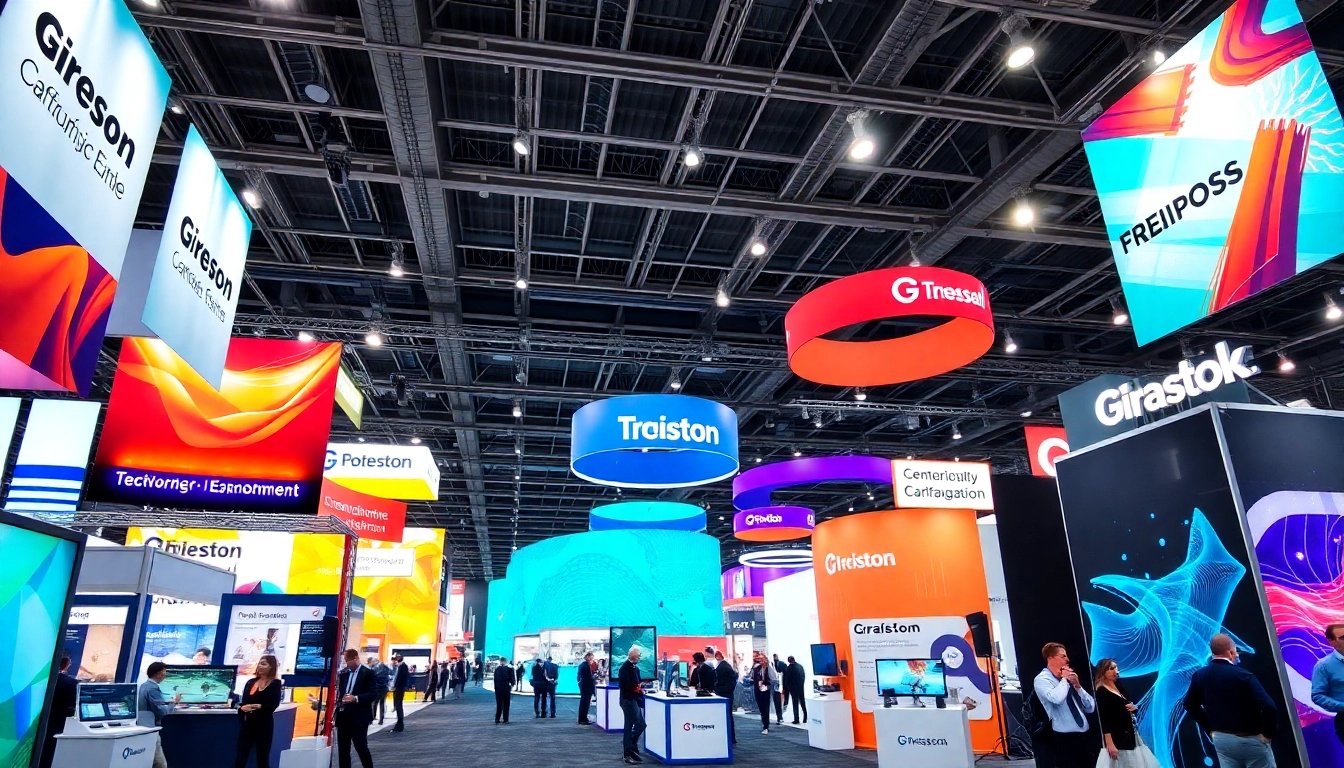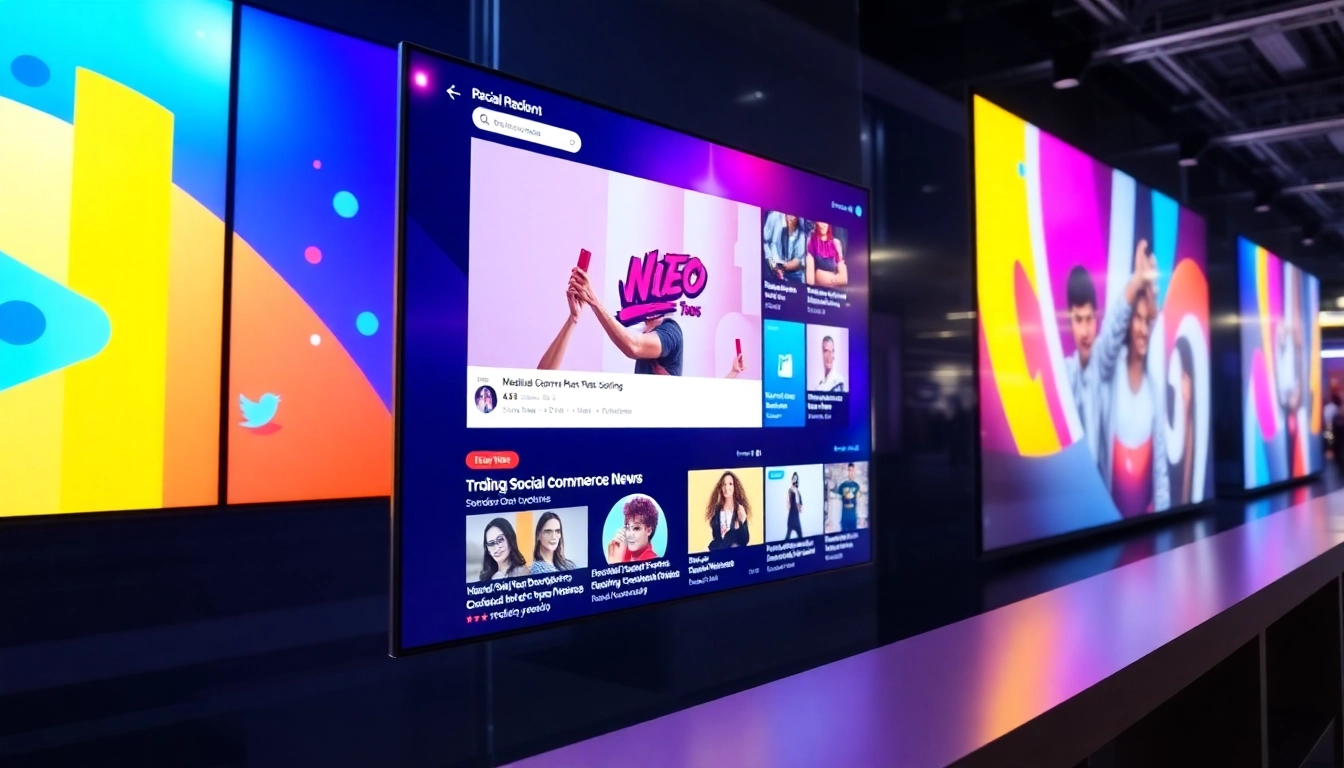Understanding the Role of Tradeshow Displays in Event Marketing
1.1 The Importance of Visual Attraction at Trade Shows
In the fast-paced environment of trade shows, capturing attendee attention within seconds is crucial. Visually striking tradeshow displays serve as the first touchpoint that draws visitors into your booth. Effective displays leverage eye-catching graphics, bold colors, and strategic placement to create an immediate visual impact. Studies show that attendees often decide whether to stop at a booth based on visual cues alone, making the design’s allure a pivotal factor in overall booth success.
Beyond initial attraction, visual appeal helps establish brand recognition and differentiates your company from competitors. Well-crafted signage and displays reinforce your brand identity, ensuring attendees remember your message long after the event concludes.
1.2 Types of Tradeshow Displays and Their Functions
Trade show displays come in various formats, each designed to fulfill specific objectives. Common types include:
- Popup Displays: Portable, easy-to-set-up banners that provide a quick, flexible branding solution.
- Tabletop Displays: Compact units ideal for small booths or added branding on tables.
- Hardwall Exhibits: Rigid structures offering durable, professional backdrops with customizable graphics.
- Digital Signage: Interactive screens and digital panels that deliver dynamic content and engage visitors through multimedia presentations.
- Creative Themed Displays: Unique setups that tell a story or create immersive experiences related to your brand or product.
Each display type serves specific functions—whether for brand visibility, information dissemination, or interactive engagement—making it essential to select the right solution aligned with your goals.
1.3 How Tradeshow Displays Influence Attendee Engagement
Engagement at trade shows extends beyond passive viewing; it involves creating an interactive environment that encourages visitors to explore, ask questions, and establish connections. Effective tradeshow displays foster engagement through:
- Visual storytelling: Telling compelling stories through visuals that resonate emotionally with attendees.
- Interactive elements: Including touchscreens, demos, or product samples to involve visitors actively.
- Clear messaging: Communicating your value proposition succinctly to pique interest and motivate interaction.
When attendees are immersed in a captivating environment, they are more likely to spend time at your booth, remember your brand, and initiate meaningful conversations—ultimately leading to higher conversion rates.
2. Designing Impactful Tradeshow Displays That Convert
2.1 Key Elements of Effective Tradeshow Signage and Visuals
Transforming a booth into a magnet for visitors requires meticulously designed signage and visuals. Essential elements include:
- Headline clarity: Use bold, concise headlines that immediately convey your key message.
- High-quality graphics: Invest in professional visuals that are sharp and relevant, avoiding pixelation or clutter.
- Brand consistency: Maintain uniform colors, fonts, and logos to reinforce brand identity.
- Call-to-action (CTA): Clear instructions guiding visitors on what to do next—whether to scan a QR code, visit a website, or speak with a representative.
By focusing on these elements, your signage becomes a powerful tool that captures attention and communicates your message effectively.
2.2 Tips for Branding Consistency and Message Clarity
Consistency is vital in making your brand memorable. Use a style guide to ensure that all elements—from colors to font choices—align with your brand identity. Keep messaging simple and focused; avoid clutter and prioritize key benefits. For example, instead of overwhelming attendees with multiple offers, highlight your most compelling value proposition. Incorporate your logo prominently, yet tastefully, so that it complements rather than dominates your visuals.
Templates and pre-designed assets can streamline your branding efforts and ensure uniformity across all display materials.
2.3 Using Colors and Graphics to Attract Attention
Color psychology plays a significant role in attracting attention and evoking specific emotions. Bright, contrasting colors can make your display stand out in a crowded trade show floor. For example, red conveys excitement and urgency, while blue suggests trust and professionalism. Incorporate bold graphics that communicate your message swiftly, using visuals that resonate with your target audience.
Furthermore, infographics and imagery that illustrate benefits or demonstrate product use can enhance understanding and retain visitors’ interest longer.
3. Selecting Materials and Technologies for Trade Show Displays
3.1 Durable, Lightweight Materials for Portability
Trade show displays must be both durable and portable. Materials such as lightweight aluminum frames, fabric prints, and corrugated plastic enable quick setup and breakdown while resisting wear and tear. Consider the frequency of use; high-traffic exhibits demand robust materials that maintain appearance over time.
Investing in high-quality, lightweight materials reduces logistical costs and enhances your team’s ability to set up efficiently, ensuring your display always looks professional.
3.2 Innovative Display Technologies and Digital Signage Options
Digital signage has revolutionized trade show marketing. Interactive touchscreens, LED banners, and virtual reality experiences create immersive environments that capture attention and foster engagement. These technologies allow real-time updates, personalized content, and seamless integration with social media or lead capture systems.
Adopting such innovations can differentiate your booth from competitors and provide measurable data on visitor interactions.
3.3 Eco-Friendly Materials for Sustainable Exhibiting
Sustainability is increasingly important in trade show planning. Use eco-friendly materials such as recycled plastics, FSC-certified woods, or biodegradable textiles. Additionally, opt for digital options to reduce paper waste, and choose energy-efficient lighting.
By incorporating green materials, your brand demonstrates environmental responsibility, appealing to eco-conscious attendees and aligning with corporate sustainability goals.
4. Strategies for Setting Up and Display Optimization
4.1 Layout Planning for Maximum Visibility
Strategic layout planning ensures your display attracts maximum foot traffic. Position high-impact visuals at eye level, create open pathways for easy access, and use signage to direct visitors toward your key offerings. Incorporating focal points within your booth, like demonstration stations or product showcases, keeps attendees engaged.
4.2 Best Practices for Booth Organization and Lighting
A clutter-free booth enhances clarity and professionalism. Organize materials logically—placing brochures near demos and refreshments away from main pathways. Lighting should be bright, focused, and complement your visuals. LED lights can highlight specific graphics or products, making your display vibrant and inviting.
4.3 Interactive Elements to Enhance Attendee Experience
Adding interactive elements like product demos, virtual tours, or gamified experiences encourages visitors to stay longer and engage deeply. Interactive tablets, touchscreens, and augmented reality applications provide personalized experiences that make your booth memorable.
Interactive components not only attract attention but also facilitate data collection, enabling you to follow up effectively post-event.
5. Measuring and Improving Trade Show Display Effectiveness
5.1 Key Performance Indicators for Tradeshow Success
Measuring the success of your tradeshow displays involves tracking metrics such as visitor count, engagement duration, leads generated, and conversions. Use lead retrieval systems, surveys, and digital analytics to gather data on booth traffic and attendee behavior.
5.2 Collecting Attendee Feedback and Metrics
Attendee feedback provides qualitative insights into what resonated and what needs improvement. Post-event surveys, comment cards, and digital follow-up forms can capture perceptions about your display’s effectiveness, message clarity, and overall experience.
5.3 Continuous Optimization Based on Data and Insights
Use collected data to refine your display strategies for future events. Adjust visuals, messaging, and interactive elements based on feedback and metrics. A/B testing different design elements can reveal what drives engagement and conversions most effectively. Continuous improvement ensures your tradeshow displays evolve and maintain a competitive edge.




